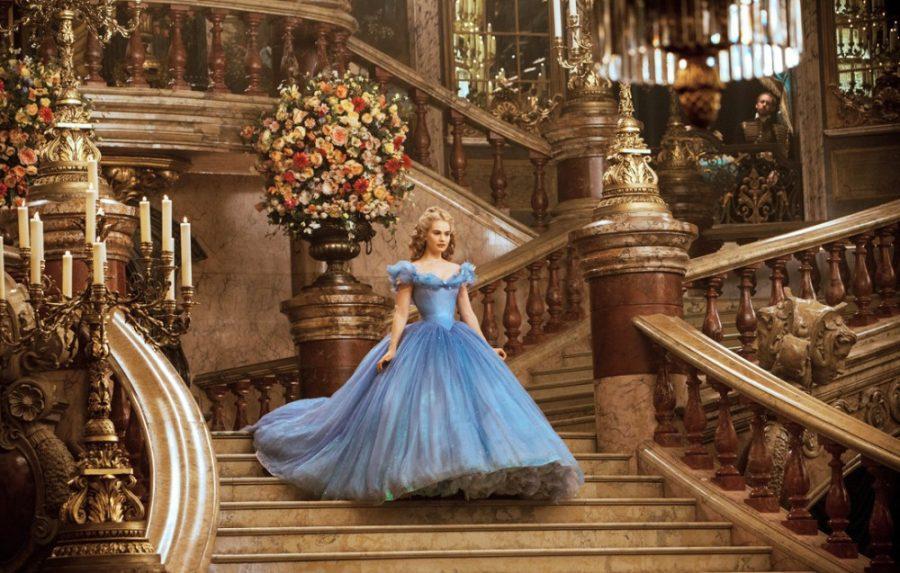In March, the only Cinderellas usually around are on the basketball court, as small schools and low seeds vie for a chance to make moves and be seen in the Big Dance. However, this year, the real deal has made a return to the big screen.
“Cinderella” marks the second installment in Disney’s current slate of live-action reimaginings of their classic animated catalogue. While this 2015 remake isn’t nearly as liberal with its source material as 2014’s “Maleficent” was to 1959’s “Sleeping Beauty,” the changes made improvements upon what has been one of the cornerstones of Disney, animation and films in general.
The broad strokes of the story remain the same. After her loving father unexpectedly passes away, Ella (Lily James) is forced to live with her stepmother, Lady Tremaine (Cate Blanchett), and two stepsisters, Anastasia and Drisella (Holliday Grainger and Sophie McShera, respectively). Ella is quickly subjugated to the role of servant, doting on their every whim and household chore.
Reincorporating a wrinkle from one of the earlier versions of the tale (Charles Perrault’s 1697 “Cendrillon”), Ella is nicknamed Cinderella by her wicked stepsisters after awaking with cinders on her face, having slept by the fire to keep warm. Ella, always remembering the instructions of her dying mother to “have courage and be kind,” is able to take the abuse in stride. James effectively avoids making Ella’s steadfast kindness and good nature come off as too simplistic and naive.
However, needing to get out of the suffocating confines after putting up with too much for one day, she rides off into the forest and meets Kit, the young, dashing man who is actually the prince of the kingdom (“Game of Thrones’” Richard Madden). The two are smitten with each other, and the prince is elated that he’s seemed to find the only woman who doesn’t know who he is.
The fleshing out of Prince Charming (he’s actually never once referred to as such) is the biggest, and most welcome, departure from the 1950 animated version, where he was relegated to a very minor role. The latter’s only appearance is at the ball, which is roughly two-thirds of the way through, and his only discernible character trait, told to the audience via his father, is that he’s just not ready to settle down.
In this modern day version, the Prince is being pushed by his ailing father to marry a woman of power and influence, one who will make a proper queen to the kingdom. The Prince butts head with his father on this, wishing to marry for love, rather than politics. It’s not a particularly new type of storyline, but it’s certainly something when compared to the original.
Thus, when he finds a girl in Ella who only knows him for his character and not his social status, he calls for a grand ball in the hopes of running into her again.
The Prince isn’t the only character that becomes more than two-dimensional. There are reasons, though they may be ambiguous, behind Lady Tremaine’s cruelty, which is brought to life with Blanchett’s sneers and glares.
Other than character improvements, the production values are of a high enough order to do justice to the captivating animation of the original. In particular, the grand ball, with its choreographed dances, elaborate gowns and expansive castle grounds, is sumptuous.
For March Madness, the clock has struck midnight for the underdogs. Perennial bracket buster Butler is finished, as are fleeting sweethearts UAB and Georgia State. Pretenders, take note: This “Cinderella” does not disappoint.
Grade: B+
_______________
Follow Alex Guyton on Twitter.









